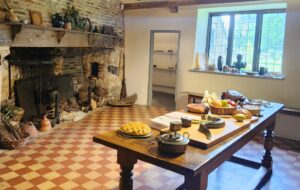Covent Garden is always a must-visit for me when I’m in London. To opera fans like myself, Covent Garden is synonymous with the Royal Opera House, but there is much more to this vibrant part of London. It is easily accessible on the District Tube Line, at the Covent Garden stop. You can enjoy tours of the area and of the opera house itself. The west end theatres are also close by, not to mention a wide array of restaurants to choose from.
Covent Garden is in London’s West End. It was originally an orchard and Covent Garden was owned by Westminster Abbey in the 13th century. Over the centuries, the area gradually transformed into one of London’s first modern public spaces. With its cobblestone streets, historic architecture, and open piazza, Covent Garden is both a cultural landmark and a thriving commercial center.
There are plenty of accommodation choices close by.
- This article may include affiliate links, through which, if a purchase is made, the writer may receive a commission.

A Rich History of Transformation
Covent Garden has undergone significant changes throughout its history. In the 17th century, the Earl of Bedford commissioned architect Inigo Jones to redesign the area, creating London’s first public square. Jones’s design was inspired by the piazzas of Europe. His architectural vision still defines Covent Garden’s unique aesthetic. During this period, the area became famous for its vibrant market, known for selling fresh produce and flowers. For anyone who has seen the play Pygmalion (George Bernard Shaw) or watched the musical,
By the 18th century, Covent Garden had evolved into a cultural and social hub, but it also gained a reputation for its rowdy nightlife. The area was frequented by street performers, actors, and even members of London’s aristocracy, which added to its allure. However, the market area’s congestion led to redevelopment discussions, and in 1830, the neoclassical Covent Garden Market building was constructed, further shaping the area’s identity as a market and gathering place.
The Market and Piazza Today
Today, Covent Garden’s covered market remains a key attraction, housing an eclectic mix of shops, boutiques, and cafes. The market is divided into three main sections: Apple Market, East Colonnade Market, and Jubilee Market. Each offers a variety of goods, from artisan crafts and antiques to fashion items and souvenirs. The Apple Market, with its beautiful glass roof, is especially popular and features stalls with handcrafted jewelry, art, and gifts, while the Jubilee Market offers antiques on Mondays and unique, often handmade, items the rest of the week.

The open piazza outside the market is always lively with street performers, a tradition that dates back centuries. They range from musicians to magicians, bringing energy and entertainment to the passersby. Many tourists and locals gather here to enjoy the performances, making it a perfect spot to soak in the district’s unique atmosphere.
Dining and Entertainment
Covent Garden is renowned for its diverse dining scene, which features everything from cozy cafes to high-end restaurants. The area has become a culinary hotspot, with notable establishments like Balthazar, The Ivy Market Grill, and Frenchie Covent Garden. You’ll also find plenty of cozy pubs and stylish cocktail bars scattered around the area, offering a place to unwind after shopping or sightseeing.
Covent Garden is at the heart of London’s theater district. The iconic Royal Opera House, originally built in 1732 and later renovated, is home to both the Royal Ballet and the Royal Opera. The Opera House offers tours and performances, allowing visitors to explore its grand architecture and history. Nearby theaters like the Lyceum Theatre and the Theatre Royal, Drury Lane, host world-renowned musicals and plays, adding to the area’s artistic appeal.
For anyone who has seen the play Pygmalion (George Bernard Shaw) or watched the musical, My Fair Lady (based on Pygmalion), you’ll recall that Liza Dolittle’s flower stall was in Covent Garden!

Seasonal Events and Festivities
Covent Garden also hosts a variety of seasonal events throughout the year. In the lead up to Christmas, the area is decorated with thousands of Christmas lights and a towering Christmas tree. Summer months bring floral installations and other special decorations, adding a burst of color to the market’s historic charm. There is also a lovely display in autumn
It is a microcosm of London itself—blending history with modernity, and culture with commerce. Whether you’re interested in history, shopping, theater, or simply enjoying London’s vibrant street life, Covent Garden offers something for everyone.


